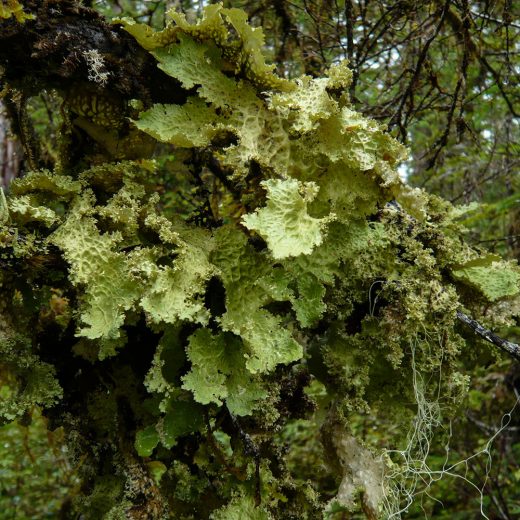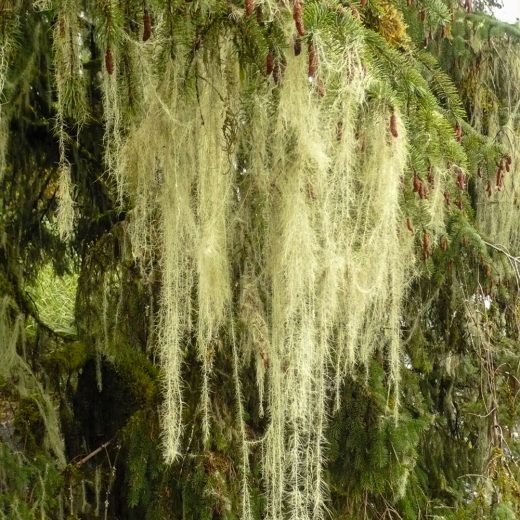Beneath the Canopy, Lichens Shroud Alaska’s Coastal Rainforests
A new study shows the region hosts tropical levels of lichen diversity.
Article body copy
In the isolated fjords of southeast Alaska, lush rainforest plunges down to meet the cold Pacific. There, among the fog and raven calls, is a glut of biodiversity. Tattered, leafy lichens stretch out on cedar limbs or hang as unkempt, verdant beards. Other varieties blanket rocks as tangerine freckles and carpets of seafoam antlers.
According to new research, this cold coastal region harbors more lichens—composite organisms composed of algae or cyanobacteria living in symbiosis with fungi—than almost anywhere else on Earth.
More than a decade ago, Toby Spribille, a mycologist at the University of Alberta, answered a call from the US National Park Service to inventory the lichens of Alaska. In their initial sweep, he and his colleagues found a staggering 766 different lichens in just 52 square kilometers of the Klondike Gold Rush National Historical Park. That find made the team wonder if temperate rainforests nearer to the water-drenched coast were equally rich—if not richer—in lichens.
So in 2012, Spribille and an international team of researchers set out to survey much of Alaska’s Glacier Bay National Park and Preserve. After months spent hunting down lichens, they collected nearly 5,000 specimens representing 947 species.
Those numbers reflect “tropical levels of lichen diversity”—comparable to what’s found in Costa Rica, says Spribille.
Lichens are composite organisms—symbiotic unions between fungi and cyanobacteria or algae. Lettuce lung lichen (first photo) and Methuselah’s beard lichen (second photo). Photos by Toby Spribille
The team’s efforts, published recently in The Lichenologist, also uncovered many new species. Some 10 percent of the lichens couldn’t be categorized into a known species and 27 new species were discovered.
Though coastal Alaska is a lichen hotspot, that diversity doesn’t seem to extend to other organisms. Amphibians in Alaska, for example, are roughly 100 times less diverse than in the tropics says Spribille.
Lichen-forming fungi, however, use spores to disperse over long distances, which may allow them to thrive where other species can’t readily colonize. In the Arctic, Spribille says, there are places of “mind-bogglingly” high fungal diversity.
Spribille adds that lichen diversity in Glacier Bay may be especially great since the area has had a very long legacy of coastal rainforests. In southeast Alaska, coastal areas such as Glacier Bay are thought to have been spared from severe climatic swings, allowing the rainforests to survive multiple glacial periods.
Microclimates within habitats can also contribute to this diversity, says Karen Dillman, an ecologist with the US Forest Service who was not involved with the study. For instance, trees that only experience precipitation as fog will have different lichens than trees that get completely washed with rain, she says.
Out in the drippy rainforests, there are likely even more lichens waiting to be found.
“The biodiversity of southeast Alaska is written in its fungi and in its moss,” Spribille says. “You can’t assume that you’ve found everything.”



